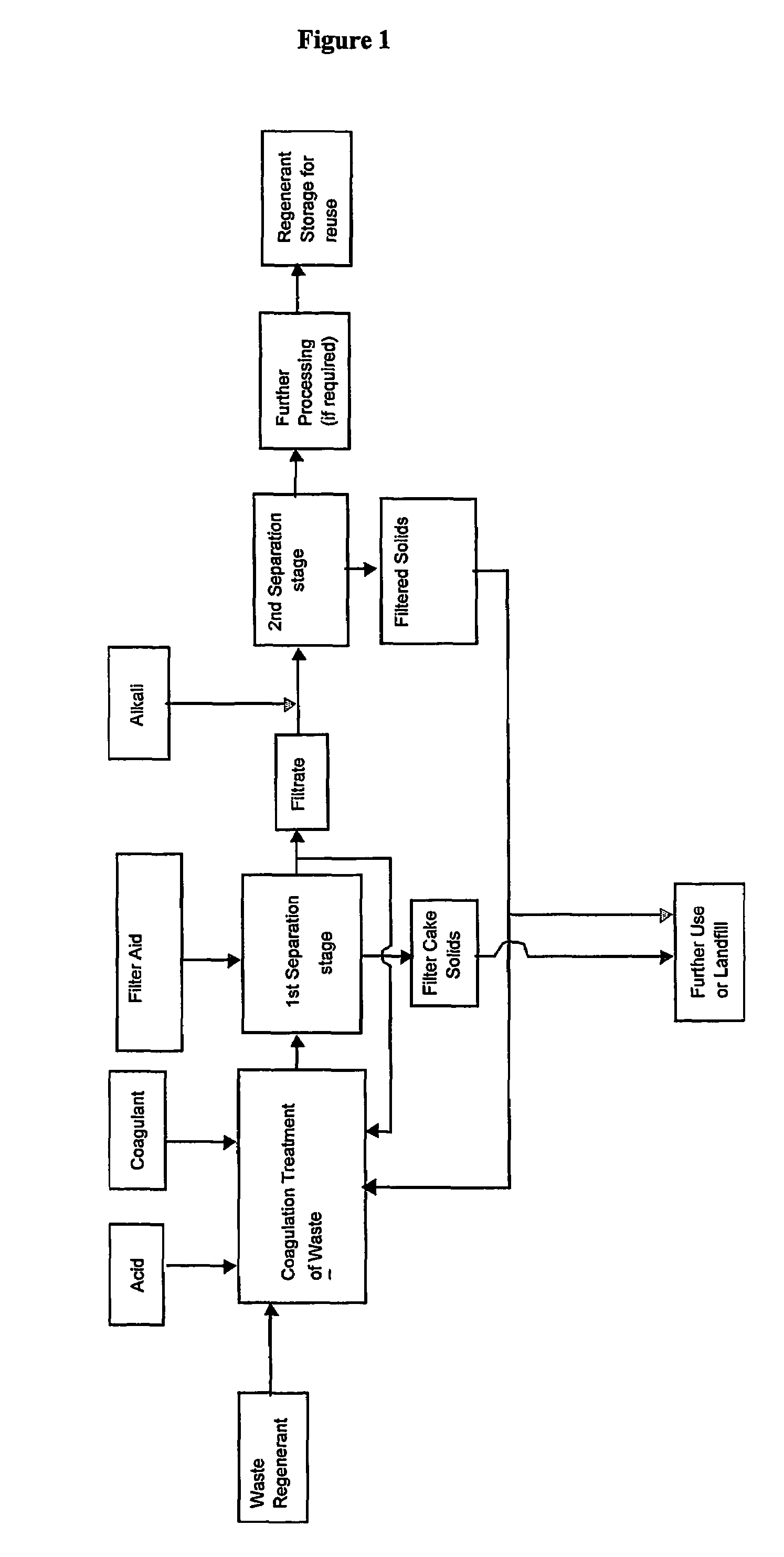Process for treating concentrated salt solutions containing DOC
a technology of concentrated salt and process, applied in specific water treatment objectives, water/sludge/sewage treatment, cation exchangers, etc., can solve the problems of unacceptably high concentration of dissolved, dispersed or suspended organic compounds and materials, difficult to separable, and the majority of compounds and materials which constitute doc are soluble. , to achieve the effect of increasing the salt concentration
- Summary
- Abstract
- Description
- Claims
- Application Information
AI Technical Summary
Benefits of technology
Problems solved by technology
Method used
Image
Examples
example 1
[0095]Waste Regenerant Sample:
[0096]Waste or spent regenerant from a water treatment plant in Australia was used in this example. Some key constituents of the waste brine were analyzed for their concentrations as shown below:
[0097]Chloride: 53,000 mg / L
[0098]Sulfate: 3,300 mg / L
[0099]Dissolved Organic Carbon (DOC): 5,200 mg / L
[0100]To 200 mL of the spent regenerant in a sealable bottle, was added a pre-determined dosage of FeCl3. The bottle was shaken for 15-30 minutes. The resulting aggregate was filtered through a 0.45 μm filter using a vacuum filtration device. The filtrate was collected and analyzed for DOC. The results are illustrated in Table 3.
[0101]
TABLE 3FeCl3 coagulation followed by microfiltration (0.45 μm)Dosage (mg / L as Fe)3507001000Final pH5.54.53.7Residual DOC (mg / L)36802020920% DOC Removal296182g DOC removed / g Fe4.34.54.3
example 2
[0102]Trial procedure: The fresh and recycled regenerant were used to regenerate a batch of resin. The UV absorbance was then measured. Salt content and pH adjustment were then performed on the two regenerants and the regeneration process repeated on the MIEX resin. This whole process repeated for 7 regenerations. The graph depicted in Fig .2 shows that the UV absorbance of the recycled regenerant was similar to the fresh regenerant. (Note that UV absorbance is a surrogate measure for DOC)
PUM
| Property | Measurement | Unit |
|---|---|---|
| concentration | aaaaa | aaaaa |
| concentration | aaaaa | aaaaa |
| pore size | aaaaa | aaaaa |
Abstract
Description
Claims
Application Information
 Login to View More
Login to View More - R&D
- Intellectual Property
- Life Sciences
- Materials
- Tech Scout
- Unparalleled Data Quality
- Higher Quality Content
- 60% Fewer Hallucinations
Browse by: Latest US Patents, China's latest patents, Technical Efficacy Thesaurus, Application Domain, Technology Topic, Popular Technical Reports.
© 2025 PatSnap. All rights reserved.Legal|Privacy policy|Modern Slavery Act Transparency Statement|Sitemap|About US| Contact US: help@patsnap.com



